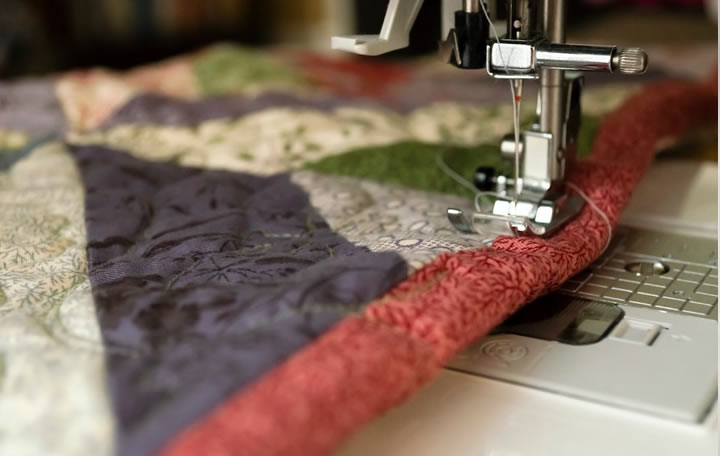Everybody wants a space that feels comfortable and reflects their personality and style. Your living space should be a reflection of who you are. However, knowing where to start when it comes to decorating your home can be overwhelming.
Making sure that your house feels like a home, something that matches your comfort, style, and personality, can sometimes feel like a daunting job. Throughout this article, we will take you through numerous tips and tricks to help you make your space truly your own.
Keep reading to discover our guide to personalizing your home.
Understanding Your Style
The first step in personalizing your space is understanding your style. Many people struggle with this because they are unsure of what their style is. However, this doesn’t mean you need to squeeze yourself into a specific box or category.
Style is fluid and should reflect you, not a label.
Start by looking around at your existing space and identifying elements that you love. Is there a common theme or aesthetic that resonates with you? Use these existing pieces as a springboard for ideas on how to build your overall design theme.
Next, consider your lifestyle. Your home should not only reflect your style but also cater to your everyday needs.
A young, single fashionista may want a chic, modern vibe with lots of mirrors and sparkly accents, while a family with young children might prefer a warm, welcoming atmosphere with durable furniture.
Additionally, your hobbies and interests should play into your style choices. For example, if you’re a keen reader, you might incorporate a cozy reading corner into your home design.
Choosing the Right Furniture
Choosing the right furniture is another vital aspect of personalizing your space. The right pieces can complement your style and make a statement about your personality.
Whether you lean towards modern minimalist designs, love the rustic farmhouse feel, or fancy the Victorian style, selecting furniture that represents your taste is key to making your home feel personal.
When buying furniture, consider its function and form. Choose pieces that suit your lifestyle and comfort. Don’t pick a piece simply because it’s trendy or looks attractive; make sure it serves a purpose and improves your living quality.
For example, if you enjoy entertaining guests or have a large family, investing in a comfortable, spacious couch makes sense.
Additionally, consider investing in quality, timeless pieces. While trends come and go, a well-crafted piece of furniture can last a lifetime. Consider going for neutral colors for large pieces—such as couches, rugs, and beds—as they can easily be accented with other colors.
A well-chosen piece like a stripe quilt can make a comfortable and stylish addition to your bedroom decor.
Infusing Your Personality
The core of personalizing your space lies in reflecting your individuality. No matter how beautifully designed, a space can feel cold and sterile if it isn’t infused with your personality. One of the easiest ways to add character to a room is by displaying personal items around your home.
This could be anything from family photos, concert tickets, and unique collections to personal art.
Art, in particular, can tell a lot about a person’s personality and taste. It can communicate a range of things, from your preferred color palette to your interests and passions, and it adds a personal touch to any space.
Don’t limit yourself to traditional forms of art such as paintings or sculptures—consider expanding your view to include things like ceramics, textiles, or even large prints of photographs you’ve taken.
Add in layers with personal touches. This can include items like throw blankets, pillows, photographs, books, keepsakes, plants, or anything else that helps to tell your story. An easy way to do this is to create small groupings of items throughout your space.
Each item might not mean much by itself but combined, they create a narrative – a narrative about you!
Exploring Different Textures and Patterns
A good tip for personalizing your space is to explore different textures and patterns.
Combining different textures can add depth and interest to a room. Using materials with contrasting textures like wood, metal, glass, and textiles can create a dynamic interior that strikes a balance between coziness and sophistication.

Patterns can be incorporated into your design through wallpaper, furniture, fabrics, and more. They can make a bold statement in a room, and when layered correctly, patterns can give a room an added layer of depth, character, and warmth.
It is important to remember, however, that balance is key. Too many patterns can overwhelm a space, but just the right amount can add just the perfect touch of personal style.
The Importance of Lighting
Lighting is an often-overlooked element of interior design, but it can drastically influence the atmosphere of your home. Choosing the right lighting can set the mood of your room, accentuate artwork, or create a serene ambiance.
It’s important to consider how natural light interplays with artificial light in your space.
Layering your lighting is another way of adding depth and personality to your room.
This means using a mix of ambient, task, and accent lighting. Ambient lighting provides overall illumination, task lighting targets a specific area for activities like reading or cooking, and accent lighting is used to highlight special features or artworks to create a focal point in your room.
Finally, don’t forget about the light fixtures themselves. They can serve as an artistic element in your room. Go for unique light fixtures that capture your style and personality, whether they are sleek and modern or antique chandeliers.
These elements can add some sparkle and personality to your space and serve as conversation starters. Shop for home decor and furniture from lighting fixtures to quilts and shams at Serena & Lily.
Adding Greenery
Greenery is a great way to bring life and color into any space. Having plants in your home not only adds a personal touch, but they also have many health benefits such as improving air quality and boosting your mood.

There are many different types of plants available that can match any style of decor.
If you’re not blessed with a green thumb, don’t despair. There are numerous plant options that require minimal care, like succulents or snake plants. Alternatively, you can opt for artificial plants. Today’s artificial plants look extremely realistic and require no maintenance at all.
Beyond potted plants, there are many other ways to incorporate greenery into your home. You can hang planters from the ceiling, create a vertical garden on a wall, or even have a terrarium as a centerpiece on your table.
These innovative options can give your space a unique touch.
Mixing Old and New
Last but not least, don’t be afraid to mix old and new decor. A blend of vintage and modern pieces can create a unique, eclectic space that tells a story of its own. Antique pieces can add a touch of charm and history to your space, while contemporary pieces keep it looking fresh and current.
If you are fortunate enough to have inherited some antique furniture or decor, use them to your advantage. These pieces can form the base of your room’s design and you can add modern touches around them.
Combining the two creates a beautiful balance of old and new.
Overall, no matter what your design approach is, it’s all about making your space feel like it’s truly your own. The most successful designs are the ones that reflect the owner’s tastes, interests, and personality, and with these tips, you’ll soon be well on your way to achieving just that.

